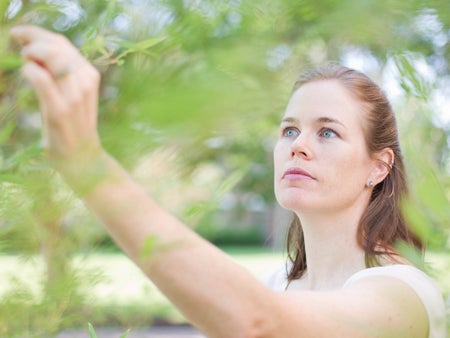If a recent trend continues, more frequent freezes and larger temperature swings between winter and spring, followed by hotter summers, could threaten oranges and other crops, according to a team of University of Central Florida researchers.
“The weather in Florida has been getting wacky,” said Betsy Von Holle, the assistant professor of Biology who led the study. “And that’s definitely having an impact beyond simple temperature changes. If the trend continues, it may affect everything from when we start seeing flowers and birds migrating to what foods we can grow.”
Von Holle suggests that subtropical crops such as oranges that depend on mild winters and springs could get squeezed out of Florida. The team’s findings are published in PLoS ONE, a peer-reviewed journal from the Public Library of Science.
The researchers’ work highlights the complexity of a changing climate in a warming world and the need for more research on seasonal and regional changes in climate, especially in subtropical areas that have received less scientific attention because they’re not warming as quickly.
Research on the impacts of climate change and the reproductive patterns of different species traditionally has focused on the mid- to high latitudes, on average as far north as Calgary in Alberta, Canada. Those areas generally have experienced strong spring warming trends that are linked to earlier flowering times.
The UCF team studied more than 50 years of data on seasonal and regional changes in climate and the flowering times of 70 native and non-native plant species throughout all of Florida’s counties.
The researchers found an overall rise in Florida’s average annual temperatures. However, unlike past studies, their work took an innovative approach by focusing on a more limited geographic region, allowing for a better understanding of regional trends that differ by season. This limited scope actually permitted the researchers to better understand seasonal variations that are masked by a focus on larger trends, such as annual average temperatures.
“There is a desperate need for more modeling on climate change to be conducted at the regional level and in tropical and subtropical regions,” Von Holle said.
UCF Stands For Opportunity: The University of Central Florida is a metropolitan research university that ranks as the 3rd largest in the nation with more than 53,500 students. UCF’s first classes were offered in 1968. The university offers impressive academic and research environments that power the region’s economic development. UCF’s culture of opportunity is driven by our diversity, Orlando environment, history of entrepreneurship and our youth, relevance and energy.
